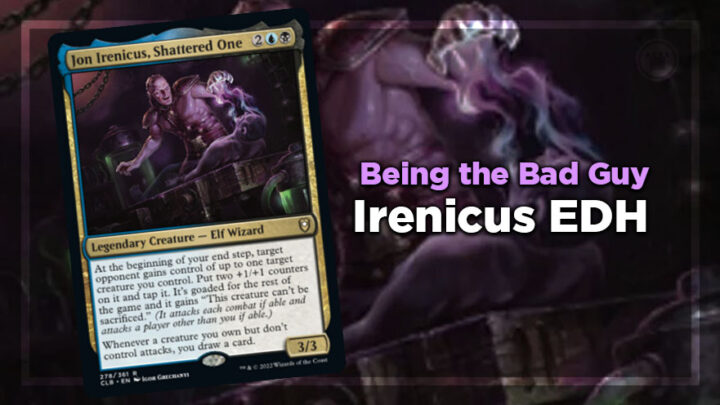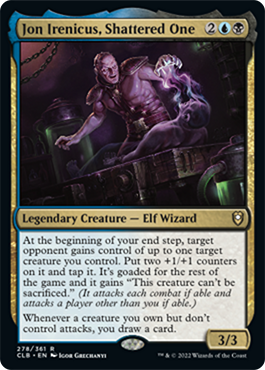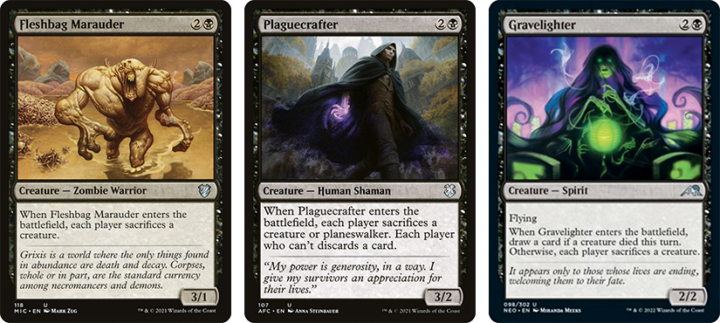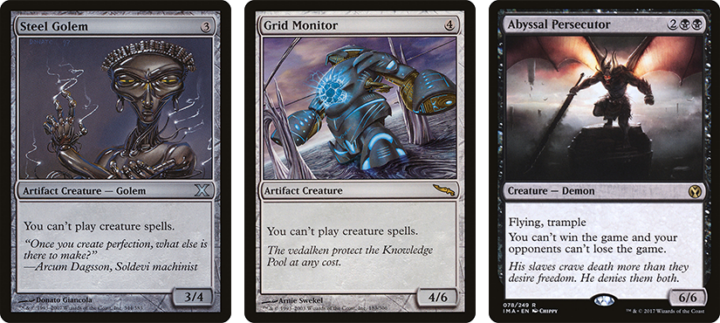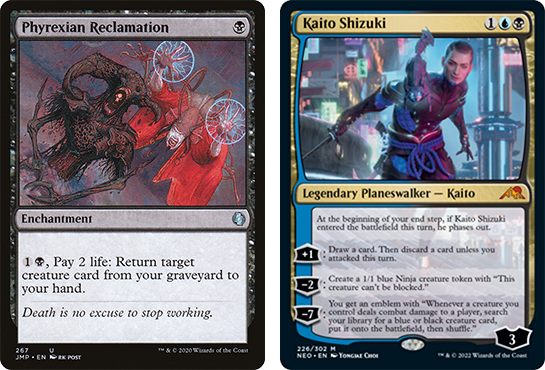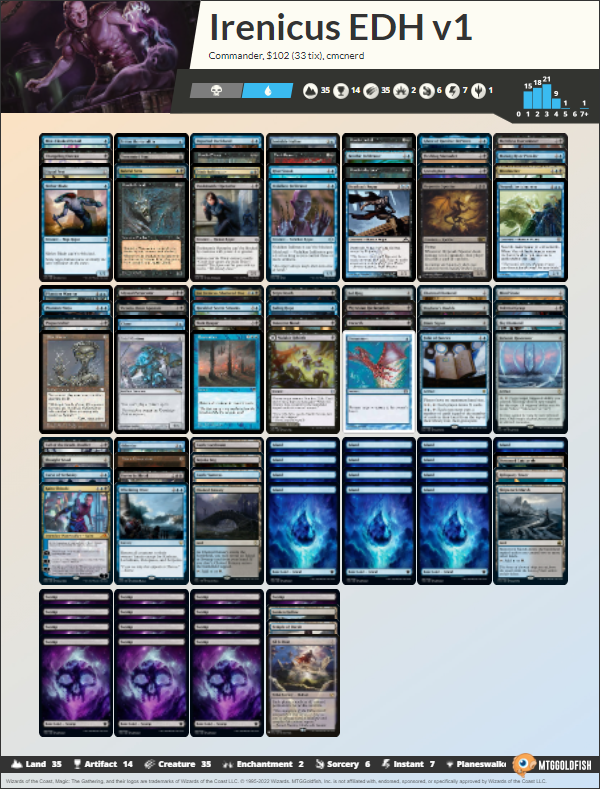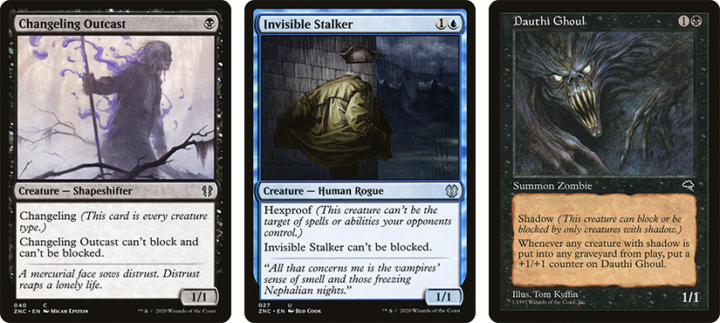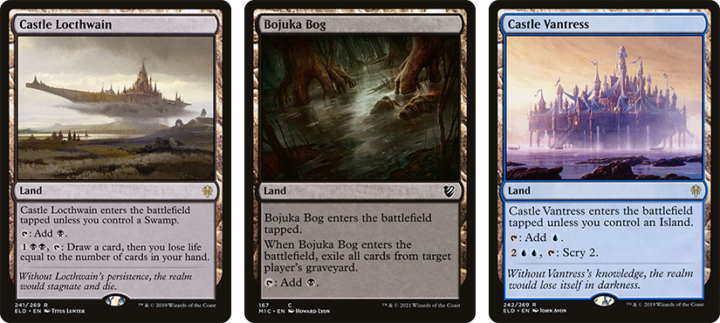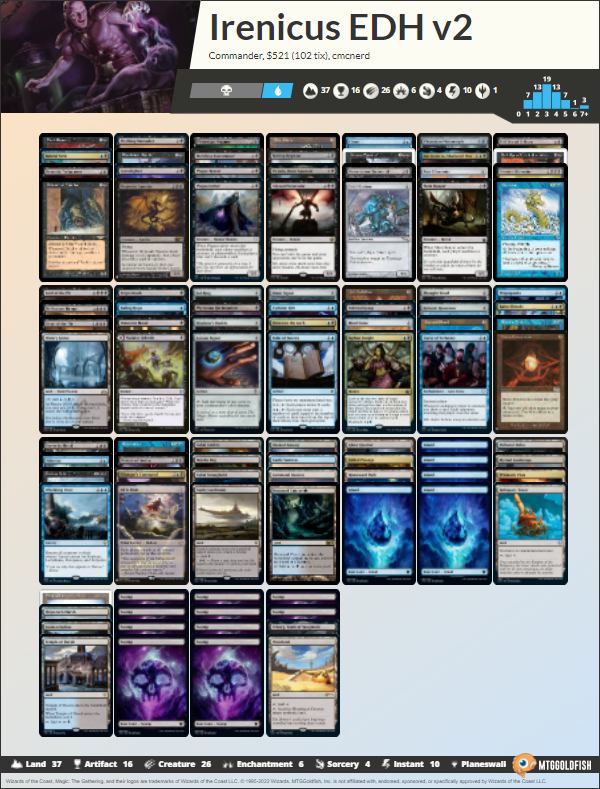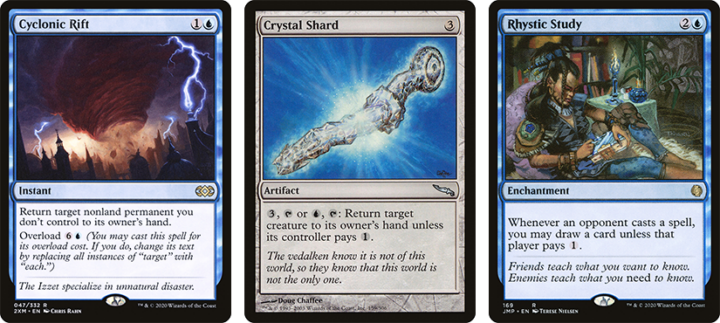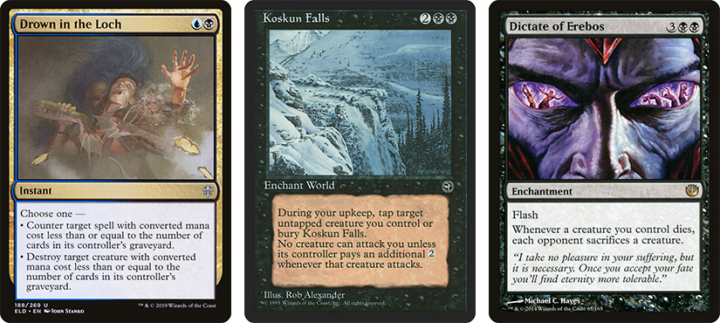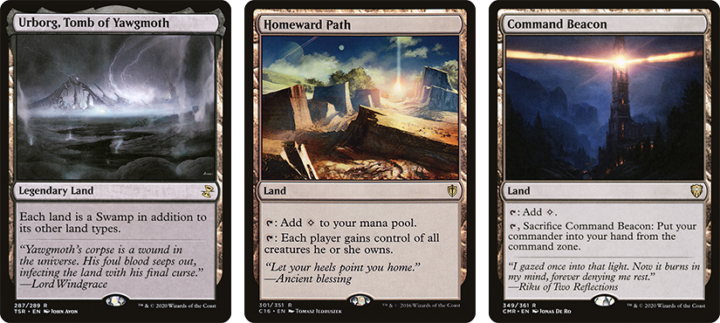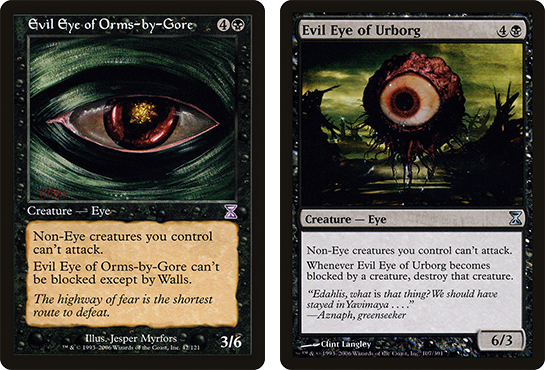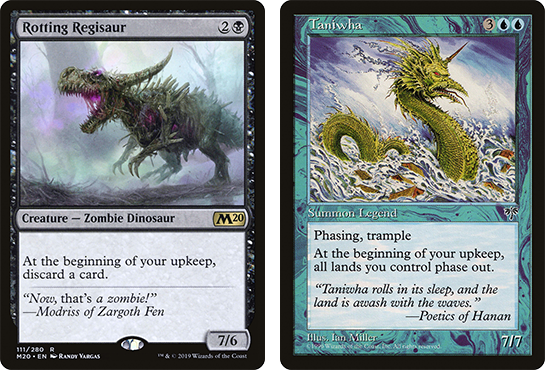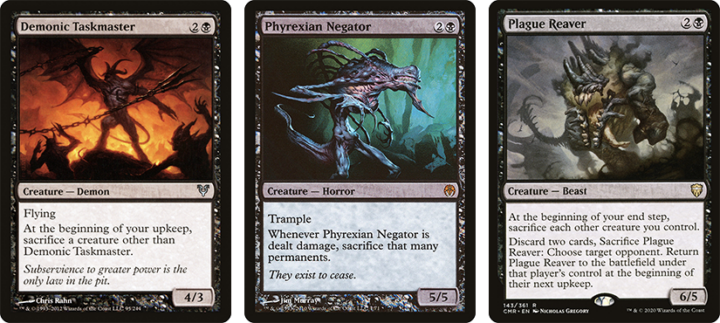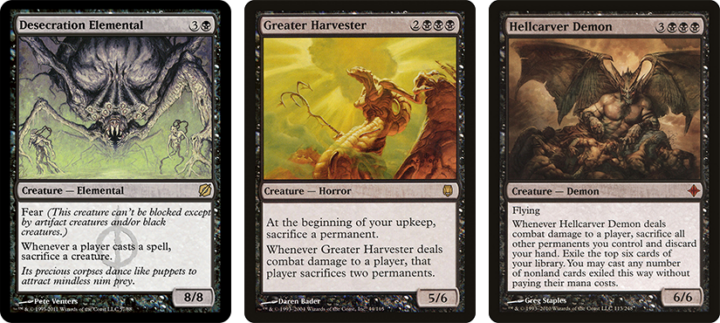Sometimes it’s nice to be mean. Chris lets out his inner misanthrope and builds a couple EDH versions of the villainous Jon Irenicus!
Being the bad guy in a game of EDH can be a tricky prospect – at least if you want to be invited back to the same table. Commander Legends: Battle for Baldur’s Gate offers up a Commander that embodies the idea of the being the bad guy, both in form and function, and we’re going to build several versions of the deck that vary in power level, cost, and likelihood that you’ll still have friends afterward.
Jon Irenicus was the main villain of Baldur’s Gate 2 and shows up here in CLB as an absolute powerhouse of a potential Commander. His ability to give away creatures isn’t anything we haven’t seen before – if you want to build solely around that, Zedruu is probably better, being more flexible, having more colors to play with, and not relying on those creatures surviving to attack to give you more resources. Goading those creatures permanently while buffing them up is certainly alarming, as you can quickly start to force the table’s hand since combat will start mattering very quickly.
But it’s that last part of the first ability, preventing the donated creatures from being sacrificed, that really catches my eye. It’s a unique effect; Sigarda, Host of Herons prevents opponents from making you sacrifice things, Assault Suit prevents one creature from being sacrificed, Yasharn is kind of in the ballpark. This allows you to try to control the board in a very specific way that will absolutely make you the villain of the table.
But villainy comes in different sizes and shapes, so let’s look at a few options for a Jon Irenicus EDH deck.
The Roots of Evil
Before we build a couple different versions of Jon, let’s look at some cards and strategies that are likely to persist between the different versions, as they just plain work well in whatever shell we end up with.
Jon’s ability to keep the creatures we give away from being sacrificed is something we’re going to lean heavily on, as that’s what’s going to let us survive until the endgame in a lot of cases. We have a suite of creatures that serve this purpose that will transfer between every version of the deck – Fleshbag Marauder, Merciless Executioner, Gravelighter, Plaguecrafter, and Slum Reaper. Paired with other targeted removal and sacrifice effects, these will let us make sure that the goaded creatures we give to our opponents will survive, while anything that can attack us dies. All is Dust is going to be a go-to board wipe for us for this same reason.
No true villain plays a game entirely by the rules, and Jon is no different. We’re going to employ creatures like Steel Golem and Grid Monitor against other creature-heavy decks to shut off any threats that can attack us. Should one of our opponents seem like they’re pulling too far ahead, we have Abyssal Persecutor to give out to make sure that they can’t just run away with the game and give ourselves (and everyone else) a chance to catch up. And just so we can double up on these effects, we’re going to have at least one Clone in each deck as well.
Targeted bounce like Fading Hope and cards like Whelming Wave, Aetherize, and Evacuation can let us reload our hand with creatures we own that different opponents control. Keeping us alive is sort of an incidental bonus, but one we’ll gladly take. Phyrexian Reclamation will let us redeploy creatures we own that die. There will be plenty of them, as everything we give away will be in combat constantly.
Kaito Shizuki is our lone planeswalker, and he is pretty much tailor made for this deck. His +1 will let us find whatever we need in any situation, and his –2 can power up his first ability. The fact that the ninja he pumps out is a decent little donate creature for Jon is a nice bonus. And if we can get him to ultimate, we can start flooding the board with whatever our opponents want the least.
Jon on his own can draw us a lot of cards, so we’re also going to be packing Reliquary Tower, Thought Vessel, and one or two other “no maximum hand size” cards with us as well. We don’t need to overload on a ton of card draw, but Curse of Verbosity is too good for us to pass up. Strionic Resonator is also an auto-include for us, letting us give multiple creatures away on each of our turns, in addition to any other value it might give us along the way. We want to be able to use every resource at our disposal, and Resonator lets us build up our advantages quickly.
Now, onto the decks!
Version 1 – Chaos Reigns!
Here we have a budget-friendly version of Irenicus EDH, and one that is probably the most fun for the whole table. We’ve essentially gone the opposite direction of what one might expect from Blue-Black, and have built what amounts to an aggro EDH deck. The twist is that we’re forcing everyone else to be aggro, whether that’s what they want or not.
The entire plan here is to just make the game end quickly – you throw down a lot of small evasive creatures quickly, and then start giving them away, forcing your opponents to hack away at each other’s life totals as they scramble to find answers. You are sowing wild chaos, then sitting back and cackling about it. This deck is about as low to the ground as we can make it, with a total of eleven cards (including Jon himself) with a mana cost of four or more. We still want all the mana rocks, as being able to cast multiple spells a turn cycle as quickly as possible is where we want to be.
It turns out there’s a lot of small unblockable creatures in Blue and Black. Of our fifteen one-to-two mana creatures, nine of them straight up can’t be blocked, two more have shadow, and only one has no kind of evasion at all (the overly buff Flesh Reaver). With Jon pumping them up and forcing them all to attack anyone but us, we can speed up the game considerably. We want our opponents to beat each other to death quickly, while using up their resources to answer each other’s boards so that we can build up our own resources quietly until the endgame.
Once we’re getting near that end game, small reanimator effects like Unearth and Call of the Death-Dweller let us get our small evasive creatures out of the graveyard, where some have surely ended up during the game. Viconia, Drow Apostate will also let us refill our hand from our graveyard over time, with those little unblockable nuisances, and let us keep the pressure up once we’re at the final one-on-one stage of the game.
Our mana base here is pretty simple, lots of basics with some various dual lands thrown in. We’re pretty even in the deck colorwise, so we don’t lean towards either color in our land split. The two on-color Castles are there to provide cards and selection in a pinch, and Bojuka Bog pretty much a must-have in any black deck these days.
So this version of the deck is still plenty mean, but we’re singularly focused enough that we do have some exploitable holes in our game plan. We have a bit of reanimation to fight board wipes, but enough of them will overwhelm our ability to keep up. We lack counterspells or ways to answer problematic enchantments and artifacts. None of this is necessarily a bad thing, it’s just good to know where our weaknesses are. This is about as fair a deck as we can build with Jon.
So… What does an unfair deck look like?
Version 2 – The Friendbreaker
Well, I hope you warned the table what they were in for. This is a deck that is not expecting anyone else to have much fun, unless they like trying to work themselves out of tricky situations. We’ve moved up in budget, power level, and cards and effects that are known to make players everywhere sigh. The creatures are the main change and feature of the deck, but let’s look at some other parts of the deck before we get there.
First, we’ve got Cyclonic Rift and Rhystic Study. The only possibly more groan inducing card we’ve left out here is Opposition Agent, but our creatures generally want to be things we’d be okay giving away in a pinch. Rift can be especially good here, as rather than just serving the role of “generically amazing card,” it fits right in as the best of our mass bounce package. Crystal Shard also slots right in, letting us rebuy our sacrifice suite, protect Jon or anything else in a pinch, or nabbing back a donated creature to redeploy to someone else in the right circumstances. Study is…I mean, it’s just good.
Next, we have a little more interaction, both direct and indirect. We’ve added Drown in the Loch and Silumgar’s Command, both modal spells that double as both counters and removal. Koskun Falls and Propaganda discourage attacking us, and Dictate of Erebos really discourages attacking if we have any blockers, and adds an additional cost to any attempts to get rid of Jon.
Our mana base is much more considered here – this version of the deck leans much more towards Black than Blue, so our lands skew that way naturally, with Urborg, Tomb of Yawgmoth fixing our mana and powering up Cabal Coffers and Cabal Stronghold. Various fetch lands make sure we can find our islands in a pinch, and Wasteland and Strip Mine are added in to interact with opponents’ lands where we need to. Homeward Path lets us recall our army when we need it, or if we just want to redistribute our creatures to different players. Lastly, Command Beacon makes sure we can cast Jon even after he’s been removed multiple times.
All right, now to the really mean bits, the creatures. We’ve moved completely off the small evasive folks and into the realm of creatures that punish you for daring to cast them. We have a selection of some of the harshest downsides in all of Magic, and Jon’s “no sacrificing these creatures” clause means that all of the downsides we give to folks will persist far longer than originally intended. I could write about each card individually, but in the interest of keeping this article to a reasonable length, I’ll just pick a few groups to highlight:
The Evil Eyes
If you go up against a token-spewing army deck, these will be some of your best weapons against them. Preventing any non-Eye creature from attacking, both of these cards are oddly perfect for us; they keep us alive and are quite hard to deal with in combat as well.
The Resource Drainers
These are relatively self-explanatory, but both pretty hilarious. For us, anyway. Regisaur beats down like the monster it is while leeching cards from whoever controls it, while Taniwha forces your opponents to play half the game solely in their upkeep – something not a lot of decks are really equipped to do.
The Cards What Make You Hit Yourself
These cards can end the game quick for whoever has them if they go unanswered. The Pit bosses are great here; even in a 40-life format, losing 7 life a turn while not being able to keep anything else on board is a problem that escalates rapidly. While Rust Elemental doesn’t hit quite that hard, it is one of our cleanest answers to dealing with problematic artifacts in our colors. Flesh Reaver is a good early threat, taking big chunks out of multiple life totals at once, and Ebonblade Reaper, while the easiest of the lot to deal with, can really change the math of the game even if it only attacks once.
Sacrifice Something Else
If your opponents do manage to stick something to the battlefield, these nightmares will take care of them sooner or later. In addition to all hitting really, really hard, they eat away at everything else on the board, but that non-sacrifice ability that Jon gives them means that they will never get sacrificed to their own abilities – the usual way out from under their effects.
Put all these creatures and other elements together, and you have a deck that is designed to dominate a game…potentially at the cost of ever being invited back to that particular table. If you want to go this mean in deckbuilding, I do seriously highly recommend letting the other players with you know what they’re getting into.
Commanders like Jon are my favorite, as they can support a variety of play- and deck-styles while still being on theme. I’m sure there’s some version of a group hug or bear hug deck to made here, but I wanted to keep to the villain role for this article. Are there any cards I missed that you think would fit into an Irenicus EDH deck? Let me know on Twitter. And however you want to build you version of Jon, we can help you out over at cardkingdom.com.

Chris is the Marketing Communications Coordinator (and editor of the blog) at Card Kingdom. He would like to apologize to his son for not holding onto more cards from when he first started playing, as that likely would have paid for college. He enjoys pretty much all formats of Magic, but usually ends up playing decks that make other people dislike playing those formats with him.

